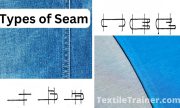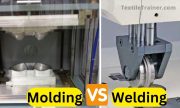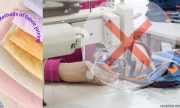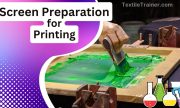Sewing
Sewing method and alternative method are using consecutively day by day. Fabric is often joined with a needle and thread by sewing. It is a traditional method that has been used for centuries. In sewing, two or more pieces of fabric are sewn together using a needle and thread. After inserting the needle into the fabric, a thread is pulled through, creating a stitch. This stitch is repeated to form a seam. 10 differences between two systems will be discussed here.
There are several advantages to sewing. It is a versatile method of joining fabric. It is also a relatively strong method of joining fabric. Sewing is also relatively fast.
Although sewing has some advantages, it has some disadvantages as well. It can be labor-intensive, as well as difficult to sew thick or slippery fabrics. It can also create bulk at seams.
Alternative Methods
As alternative methods of joining fabric have developed in recent years, they offer many advantages over sewing, including faster production speeds, less labor, and a smoother seam finish.
Using adhesive bonding, two fabrics are joined by adhering the adhesive to them, then pressing them together. The adhesive bonds the two fabrics together.
With conventional thermal welding, the fibers of the two pieces of fabric are melted together by using a heated tool. The melted fibers then fuse together.
This method produces a stronger and more durable seam than conventional thermal welding because it uses ultrasonic or laser energy to melt the fibers of the two pieces of fabric to be joined.
Molding is a method of fusing fabric by using heat and pressure. The two pieces of fabric are placed in a mold and then heat and pressure are applied.
An interlining is placed between the two pieces of fabric that are to be joined, and it melts when heated. Fusing is a method of joining fabric using heat and pressure. It is the heat and pressure that cause the interlining to melt and fuse to the fabrics.
Best 10 Differences Between Sewing Method and Alternative Method of Fabric Joining are given below:
| SL No. | Sewing Method | Alternative Method |
| 01 | A needle and thread are used to join the garments here.. | Here, fusion gluing, stapling, molding, and adhesive are used to join two or more fabrics. |
| 02 | Sewing lines become soft as the garments are sewn. | The fabrics become stiff and rough along the sewing line (which is not suitable for molding). |
| 03 | It is comfortable during the end-use. | The end-use is not comfortable (Not perfect for molding). |
| 04 | This method produces seams with higher strength. | Compared to sewing, the seam strength is lower here. |
| 05 | By sewing at a faster speed, fabrics can be joined here. | Compared to sewing, here fabrics are joined at a slower speed. |
| 06 | Sewing is the most common method of joining fabrics. | All the fabrics cannot be joined by using this method. This method requires fabrics to contain 65% thermoplastic fiber. |
| 07 | The method is the most useful and universal. | Rarely is this method used. |
| 08 | Using a faulty stitch, we can see the fabrics again. | By opening defective or faulty stitches, the fabrics cannot be rejoined. |
| 09 | Due to the hole made by the needle at the sewing line, stitch bondings are not water-resistant. | At the sewing line, the stitches are water-resistant. |
| 10 | Fabrics made of synthetics are more prone to seam slippage. | Compared to sewing, seam slippage is relatively rare |
In conclusion
Although sewing is the most common method of joining fabric, there are several other methods that offer advantages over sewing. The best method of joining fabric will depend on the application.






